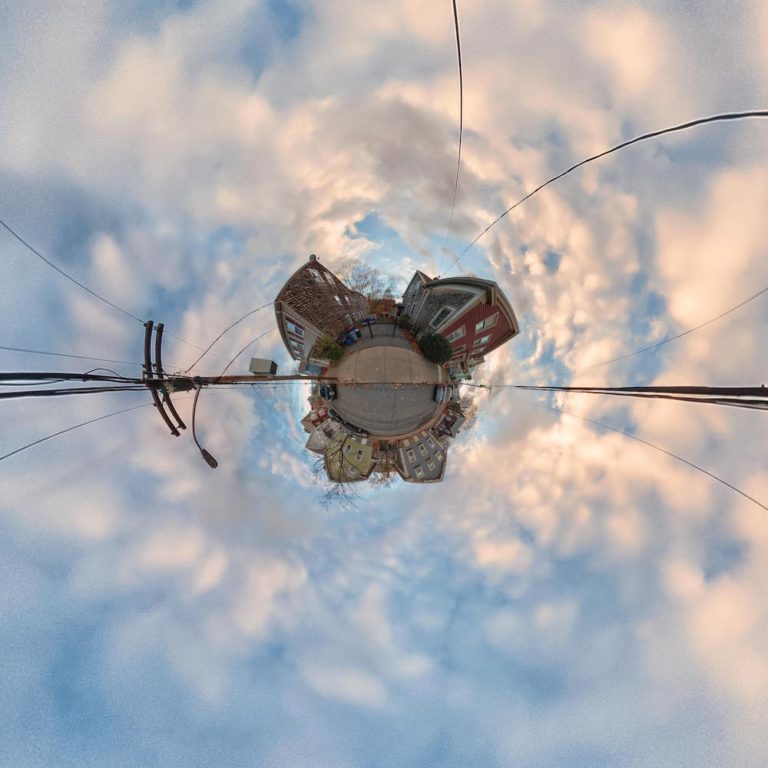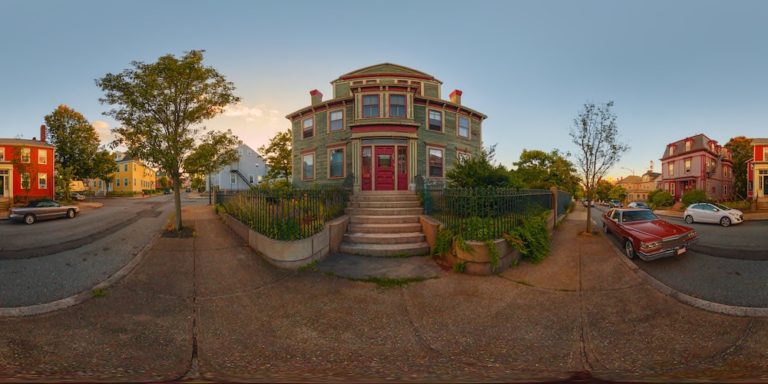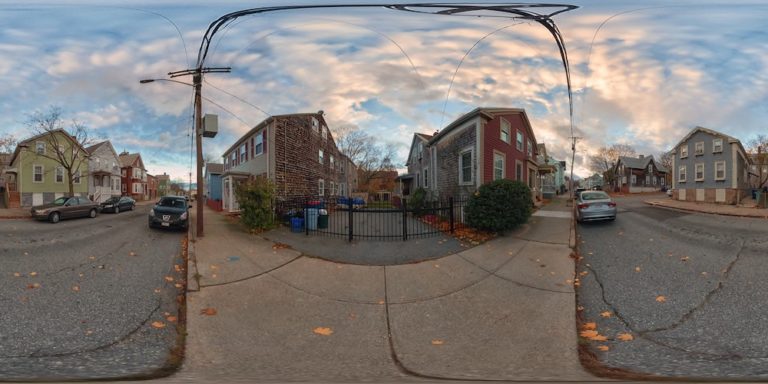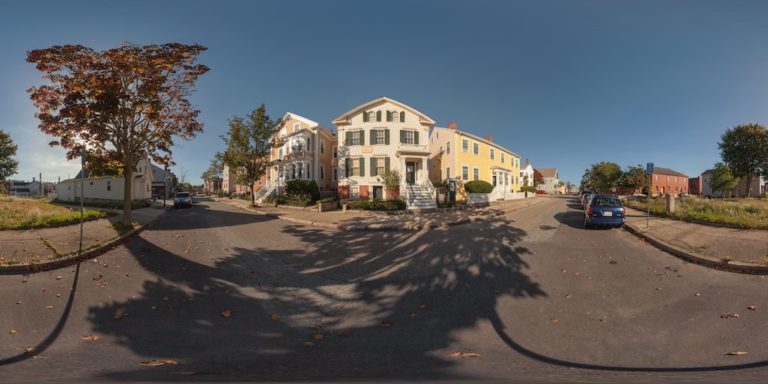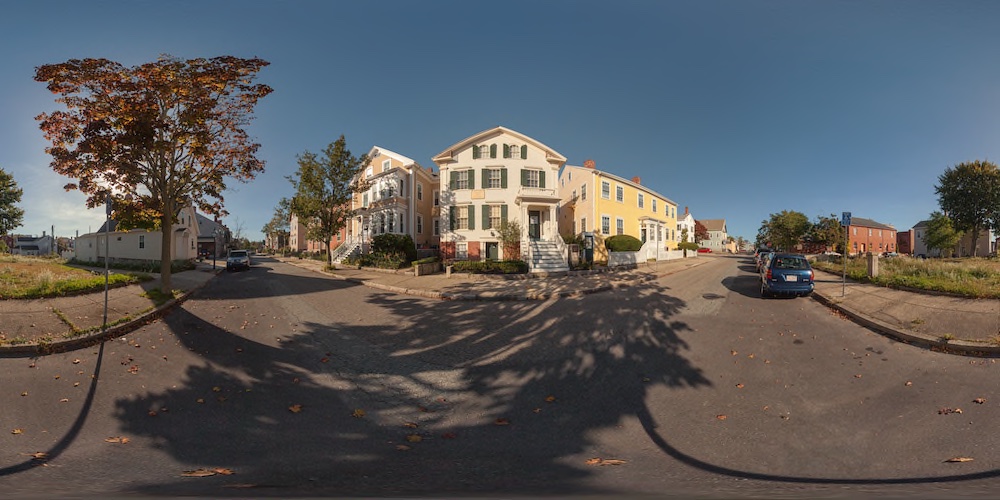
Black Spaces Matter: Celebrating New Bedford’s Abolition Row
The Black Spaces Matter showcases the abolitionist neighborhood located near the New Bedford Whaling National Historical Park. This neighborhood, which was the home of African Americans, white and black abolitionists, and formerly enslaved people, provides a lens through which we may study interracial aspects of American cities. Massachusetts law abolished slavery in 1783, more than 80 years before the Thirteenth Amendment; however, federal law supporting slave owners superseded this law and there were cases of formerly enslaved people being “reclaimed” from Massachusetts in the years that followed. A strong network of black and white abolitionists gave New Bedford its claim to fame that no one was ever forcibly taken from the city to be re-enslaved.
Black Spaces Matter exhibited in 2018 at UMass Dartmouth’s College of Visual & Performing Arts, and celebrates the aesthetics and architectonics of a neighborhood where black and white abolitionists lived. Through this exhibit, The New Bedford Historical Society, along with local New Bedford experts and students and faculty from UMass Dartmouth reveal a lesser-known progressive interracial neighborhood in the U.S.
Explore documentary videos about Abolition Row featuring historians and neighborhood residents today; created for the Black Spaces Matter exhibition by Don Burton.
Discover Abolition Row Homes
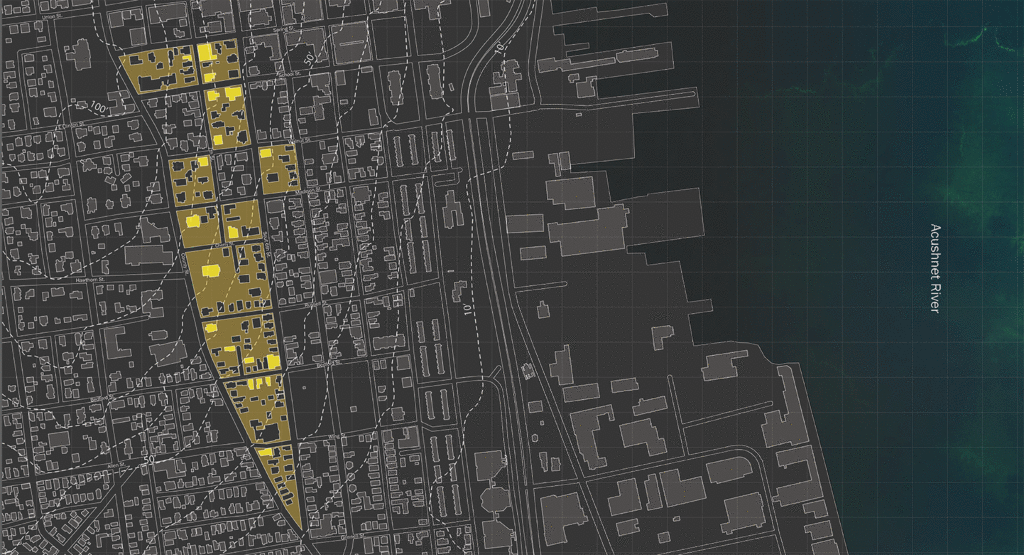
Abolition Row Homes - 360° Spherical Photographs
The Black Spaces Matter project chronicles the architecture, history and the contemporary personality of New Bedford’s Abolition Row through a series of videos, photography, models of the neighborhood and virtual reality installations. The featured 360° spherical photography was designed and created by digital media artist, Michael Swartz.
Abolition Row - VR Street Tour
“New Bedford has a rich history of innovation and social justice, I was always mindful of these incredible stories. When it came time to create a virtual tour and document these homes, I spent a lot of time planning the shots. Over the course of a year, I scouted the locations and made detailed notes about the best time of day to capture the best light for each location. Some of these homes are in disrepair and I didn’t want that to overshadow the historical significance of them, so it was important to frame them in the best light possible. Because the sky was so important to the images, I would often call up my friend, Don Burton (who was also part of the project), and ask him what the weather was like. I lived 45 minutes away, and Don could save me a trip if the sky was too overcast or uninteresting.
To create the photos themselves, I stitched multiple exposures together (18 or more) into one large image. I also took multiple exposures at different shutter speeds and combined them to get a high dynamic range of light for maximum control in the editing process. I shot using a custom-made, spherical tripod head that rotates around the precise entrance pupil of the lens itself, rather than the camera body, to avoid parallax between images. I created the virtual tour by connecting the images together with links and an interactive map, using specialized software.”
–Michael Swartz, digital media artist
Abolition Row From Above – 360° Flyover
Fly over the rooftops of Abolition Row for a new view of the city.
The Drone Tour was produced by filmmaker, Don Burton with aerial photography by Joel Cordero.
See New Bedford, Massachusetts from above as you begin at the waterfront, then descend gently into Abolitionist Row. Narration by historian, Kathryn Grover, author of The Fugitive’s Gibraltar: Escaping Slaves and Abolitionism in New Bedford, Massachusetts.
Creating the 360˚ Drone Tour:
“The Black Spaces Matter team and I wanted to evoke in viewers a heightened awareness of the Abolition Row neighborhood while also providing an historical introduction. And we wanted to do it from a new angle. After all, when an audience views a place and a topic through a different frame, like that of 360˚ VR goggles, then viewers have a chance to understand physical, emotional and intellectual perspectives that they may not have considered before.
BLM curator Pamela Karimi and I previously recorded an audio-only interview with historian Kathryn Grover in which she described how Abolition Row evolved in the 19th century as Quaker ship owners moved from the waterfront up the hill. With only her audio, in a conventional documentary I’d simply edit Grover’s interview so the viewer could hear her while seeing b roll of what she was saying. But we didn’t want convention, and we couldn’t stage a period recreation of New Bedford — why not hear Grover along with sounds of the 19th century all while we take viewers on a 360˚ interactive tour above contemporary New Bedford?
The pressure was on. At the time of filming in 2017, 360˚ cameras were barely on the market and our first attempts were too shaky and low resolution. We were at the edge of what prosumer technology was able to do and the clock was ticking. Then, just as we considered ditching the idea, Garmin released the VIRB 360 for $900 with all the features we needed. I rented it, aerial camera operator Joel Cordero retrofitted his drone so it would attach, and we nailed the shots. We never really knew if it would work but if we had waited for the technology, we wouldn’t have been ready when it became available.
The marriage of new technology with a call to understand new perspectives of our shared histories is what makes filmmaking exciting to me. It’s not just about the tools. It’s about how to use those tools to help viewers, including myself, reframe our physical, emotional and intellectual spaces.”
– Don Burton, filmmaker
The VR Street Tour and 360˚spherical photography were designed and created by digital media artist, Michael Swartz; The Drone Tour was produced by filmmaker, Don Burton with aerial photography by Joel Cordero. All works were originally featured in the Black Spaces Matter exhibition.
Events
DATMA Design Days: Eco Art!
DATMA Design Days: Eco Art! 4:00 – 6pm Eco-Friendly Art is an all-ages art project activity where kids and families can explore the importance of recycling and waste reduction, all while transforming discarded plastics and other materials into eco-friendly masterpieces. This free interactive event is for families and kids all ages.



